If you, as an employer are able to reduce high blood pressure and associated cardiovascular disease stemming from high blood pressure, the direct and indirect financial benefits are profound. How do you do it?
The direct and indirect health costs of high blood pressure to employers
Payroll, supplies, rent, property maintenance, advertising — when companies or employers need to shave the budget, these costs are frequently the target. But what about the employer-related costs of high blood pressure?If you, as an employer are able to reduce high blood pressure and associated cardiovascular disease stemming from high blood pressure, the direct and indirect financial benefits are profound:
- health care cost savings
- health risk reduction
- disability claims reduction/management
- reduced sick days
- productivity improvements
- reduced presenteeism
- improved employee job satisfaction
- improved moral
to name a few.
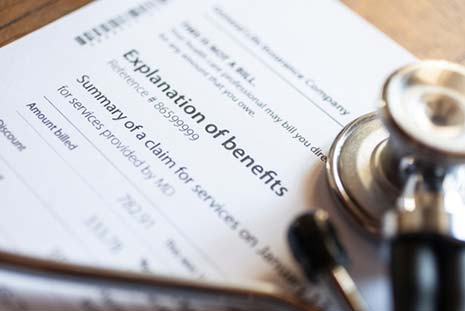
Know the Facts About Employer Health Care Costs and Hypertension
Most HR benefits manger and company chief medical officers already have a good idea of their own health care costs related to cardiovascular disease. Here’s a quick of review of some big picture numbers. Cardiovascular disease will account for $656,000,000,000 in costs on the U.S. healthcare system in 2015. Of this figure, 20% is the direct result of high blood pressure. Over 50% involve high blood pressure as a risk factor. How much of your budget this year will be eaten up by these expenses? This quarter? This week?These cost are on the rise. Projections show that by 2030 the prevalence of hypertension will increase 7.2 percent from these 2013 estimates. Annual costs directly attributable to high blood pressure are projected to increase $130.4 billion in 2030 compared with 2010.
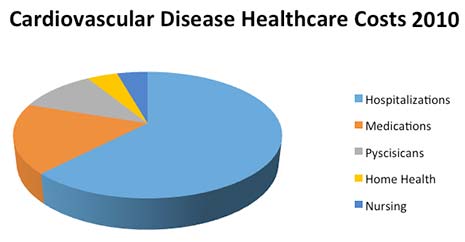
Employer-related costs of high blood pressure in the workplace
Medical, workers comp, short-term disability expenses, productivityDid you know?1
- High blood pressure implications conservatively cost employers $21 million a year, $7 million in direct costs
- An employee with high blood pressure costs $730 more per year
- High blood pressure is involved in 50% of cardiovascular disease which costs $9500 more per employee a year
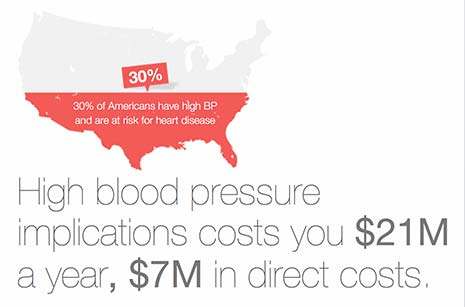
In addition to doctor visits, workers comp, short-term disability expenses, the costs of high blood pressure are accrued by employers in ways other ways:Medication costsWhat percentage of your employees are on high blood pressure medication? In 2009, over 17% of Americans reported they were. Imagine if even ten percent of those taking hypertension medication could lower their blood pressure enough to reduce or stop medications all together. The result would be substantial savings to your insurance each year, even this quarter.As significant as hypertension medication costs can be, they pale in comparison to hospitalization costs from a stroke or heart attack resulting from individuals not taking their medication as prescribed. Many patients to fail to follow their doctor’s orders regarding medication because of side effects, cost or lack of awareness about effectiveness.A benefits management study of 100,000 employees over a one year period found 243 hospitalizations, totaling costs over $4 million, that could have been avoided if employees had known their daily blood pressure and adhered to their medication prescriptions.Productivity loss: Absenteeism Employees with high blood pressure are likely to experience health issues that will keep them away from work. One obvious cost is wages paid to absent employees. It costs in other ways too. What if entire teams can’t meet your next project deadline because an ailing member is out sick and misses a meeting? Or, are other employees or temporary workers having to cover for missing staff, impacting their moral and making it harder to complete their own work? What are the administrative costs of managing absenteeism? Keeping employees healthy will help keep them at work, and keep employers’ projections healthy too.Productivity loss: PresenteeismOne result of high blood pressure can be tiredness or fatigue, resulting in presenteeism—the problem of workers’ being on the job but, because of their medical condition, are not fully functioning.

What’s the personal result? In the case of HBP, muscles don’t get enough blood to meet their needs, and activities like climbing stairs, walking, and lifting become difficult. A general fatigue sets in. Knowledge workers have concentration issues.What’s the work result?: Lower individual productivity by one-third or more. In fact, presenteeism can be a much costlier problem than absenteeism, medical treatments or drug costs combined! Weekly quotas not met. Quarterly goals missed. Even in an office setting, it has effects. Employees with low energy simply don’t or can’t get as much done. Moreover a relatively small decline in one person’s performance may have a ripple effect on an entire team. For work that requires more physical labor, the effects can be even greater. A healthier work force is simply a more productive work force.Health insurance costsAs mentioned, an employer’s costs for health benefits are already high. Add to this the rate increases resulting from a high number of claims, and you have even higher costs . This can add up simply from doctor visits, prescription claims, and ongoing treatment of high blood pressure. If it progresses to something more serious like stroke or heart attack, the costs are staggering.
How to lower blood pressure and employer-related costs?
The National Business Group On Health reports 80% of heart disease and stroke can be prevented. Encourage your employees to take good care of themselves. This may involve making changes to your policies, offering new programs, and even creating a new atmosphere at your business. How?
Make is easy for employees to track and understand their controllable heart-health risks
Provide employees with resources to stay aware of their true heart health condition. Make it easy and convenient for anyone at risk for high blood pressure, to track their blood pressure, understand the numbers and stay organized about their heart health. Hello Heart (iOS, Android) offers a clear, inexpensive and simple solution to do this. FDA-approved connected blood pressure devices are about $80 and Hello Heart app is free.
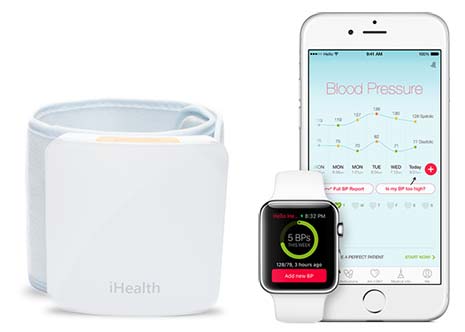
Blood pressure trackingTracking alone can reduce blood pressure by 9 points. Tracking with a device as intimate and always present as a iPhone, Apple Watch and Android can be even more effective, significantly reducing costs to employers. When users keep track of their blood pressure and trends they start noticing how little changes influence their results. Tracking puts employees well on their way to reducing health risks, and in turn, healthcare costs.

Heart health educationUnderstanding medical data gets people 63% more engaged in improving their health. Help employees grasp the facts about their health and ways to improve it. If they realize there is something they can do, employees can take a more active role to manage their health and be more consistent at work.
- Self-monitoring with Hello Heart can reduce blood pressure by 10+ mm Hg systolic on average.
- The risk of death from ischemic heart disease and stroke doubles for every 20 mm Hg increase in systolic blood pressure. Anything that reduces it by 10 points cuts that risk by 25%.
- Over 50% of American’s cannot understand if their lab results are good or bad. Hello Heart connects to their health clinic; imports lab results and presents the data with clear, actionable messaging
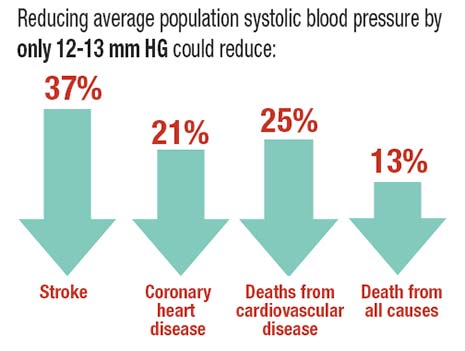
Healthier living through baby stepsSitting is the new smoking when it comes to health risks of office workers. Lack of regular movement, weight, stress and eating habits all contribute to poor health of knowledge workers today. But you can’t expect to change habits overnight. Hello Heart approaches these issues by encouraging baby steps. Little changes can make a big impact.Attention to warning signs before stroke or heart attackHigh blood pressure is called the silent killer for a one very good reason: there may be no overt warning signs before stroke or heart attack. In fact one in four people who die from a heart attack die within the first hour of their first symptom The odds of survival increase dramatically if an individual can get to their doctor before they experience overt symptoms. Regular tracking of blood pressure does just that - it lets patients know before they hit a crises stage - before they have a stroke or heart attack. Tracking gives them a detailed record and an automatic alert “Your BP has been over 140 for 4 weeks. Emergency care needed. You need to see your doctor now”. When patients get to their doctor in time, they prevent the catastrophic impact (and cost) of heart attack or stroke.

Small steps can lead to big financial rewards
In the end, what seems like a time or financial sacrifice to put programs in place and make changes will actually save money in healthcare costs and even be cost beneficial. If you would like additional information, contact Hello Heart about our partners plan for you and your employees. Start shaving off that bottom line this quarter.